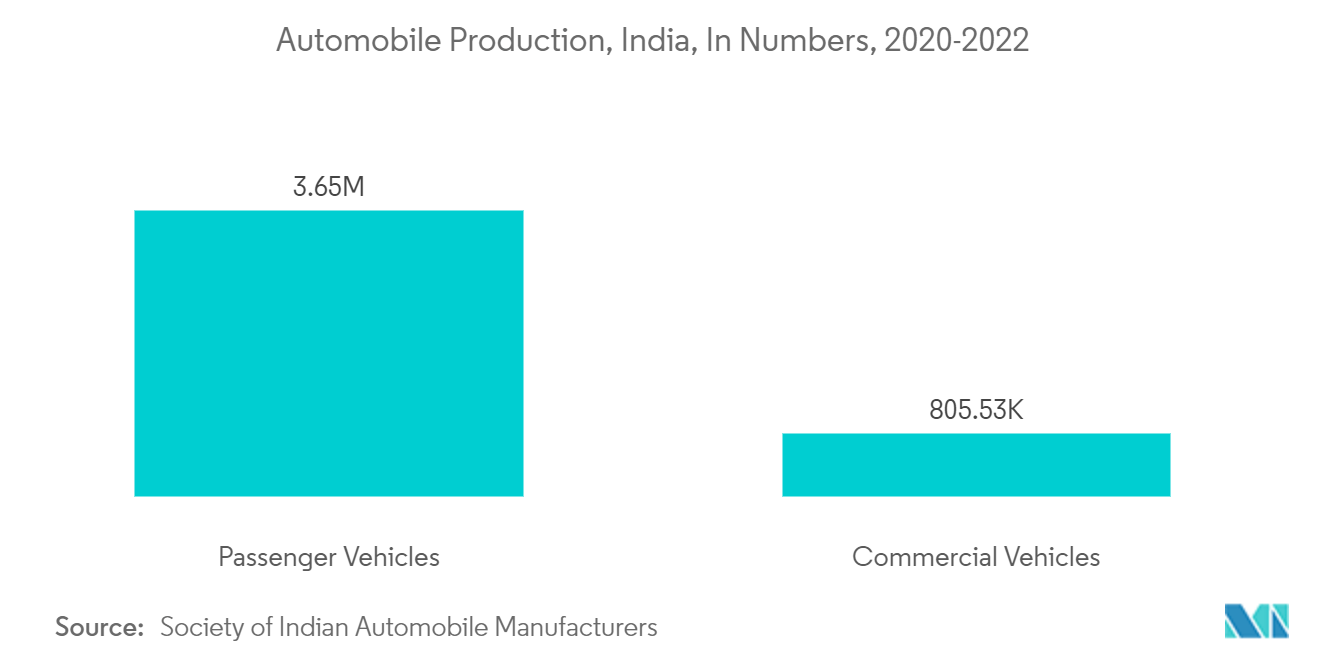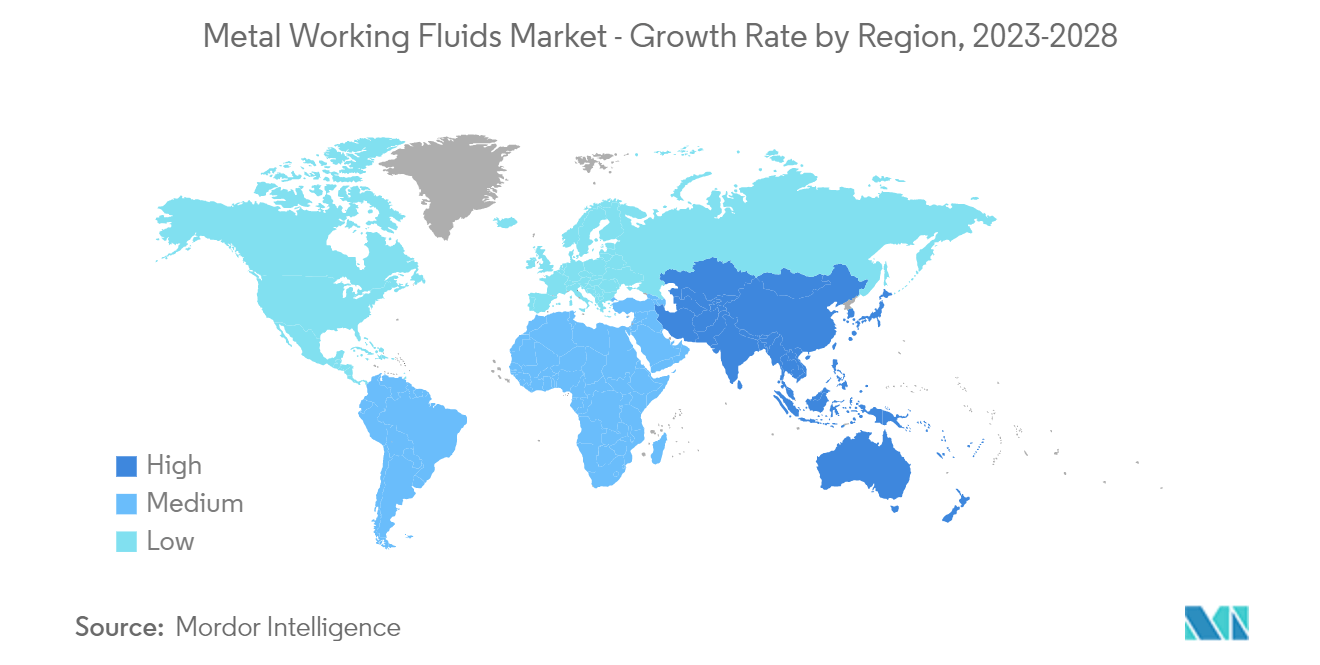Market Trends of Metal Working Fluids Industry
This section covers the major market trends shaping the Metal Working Fluids Market according to our research experts:
Increased Demand for Automotive Sector
- The demand for metal working fluids is expected to be driven by growing demand for automotive and heavy industry machinery. Hence, the expansion of the automotive industry is expected to be a primary driver of the metal working fluids market.
- Metal working fluids are used in the automotive sector since they can decrease friction between the workpiece and the tool, provide a good surface quality, remove metal chips, and increase tool life. Machining operations' efficiency is increased using metalworking fluids, leading to increased machine output.
- The expansion of the automotive segment in China is anticipated to benefit the demand for metal working fluids. According to the International Organization of Motor Vehicle Manufacturers (French: Organisation Internationale des Constructeurs d'Automobiles) (OICA), China is the largest producer of automobiles. The country produced 2,60,82,220 units of vehicles in 2021.
- Furthermore, India witnessed a significant increase in the production of passenger vehicles. For instance, according to data published by the Society of Indian Automobile Manufacturers (SIAM), the production of passenger vehicles reached 3,650,698 for 2021-2022, representing an increase of 19% compared to 2020-21, thus, supporting the market growth significantly. Hence, with expanding automotive industry, the demand for metal working fluids subsequently increases during the forecast period.

Asia-Pacific to Witness the Fastest Growth
- Asia-Pacific dominated the market primarily due to the increasing demand from the agriculture and construction sectors. The increasing industrialization and economic development are driving the growth of the heavy machinery industry in countries such as China, India, Japan, etc.
- Metal working fluids are extensively used during heavy machinery and equipment manufacturing processes. Thus, with the increasing demand for such machinery, the demand for metal working fluids is also anticipated to increase in the near future.
- The heavy machinery industry covers a wide range of sub-sectors, such as machine tools, heavy electrical equipment, cement machinery, material handling machinery, plastics processing machinery, process plant equipment, earth moving, and construction and mining equipment, among others.
- China's 14th Five-Year Plan offers an opportunity for China to advance its agricultural and rural transformation, which directly co-relates to an increased usage of heavy machinery in agricultural and construction activities.
- Further, the export of construction equipment in India grew by 60.5% to 7,802 units in 2022. The central government budgeted a 36% increase in its capital spending to INR 7500 billion (USD 100.5 billion) in the fiscal year 2022, with a focus on infrastructure development.
- Additionally, Japan is witnessing stable growth in the production of agricultural machinery. According to data from the Japanese Agricultural Machinery Manufacturers Association (JAMMA), in 2021, the total production of various farm equipment (rice husker, power thresher, vegetable machinery, etc.) stood at 520,394 (much higher than the 429,862 produced in 2020), out of which a total of 120,061 tractors were produced.
- Thus, owing to the aforementioned factors, the Asia-Pacific region is expected to dominate the Metalworking fluids market during the forecast period.

